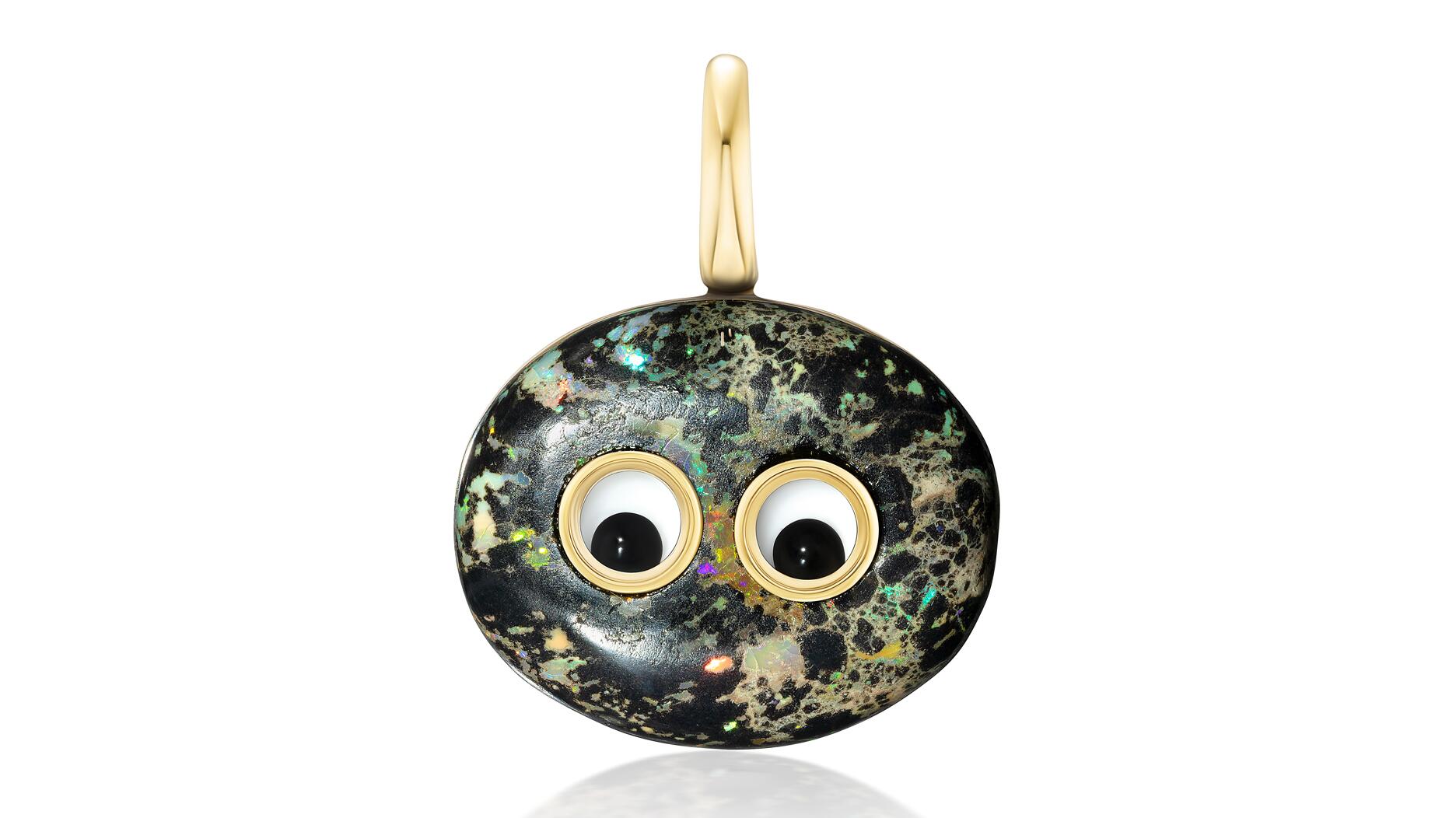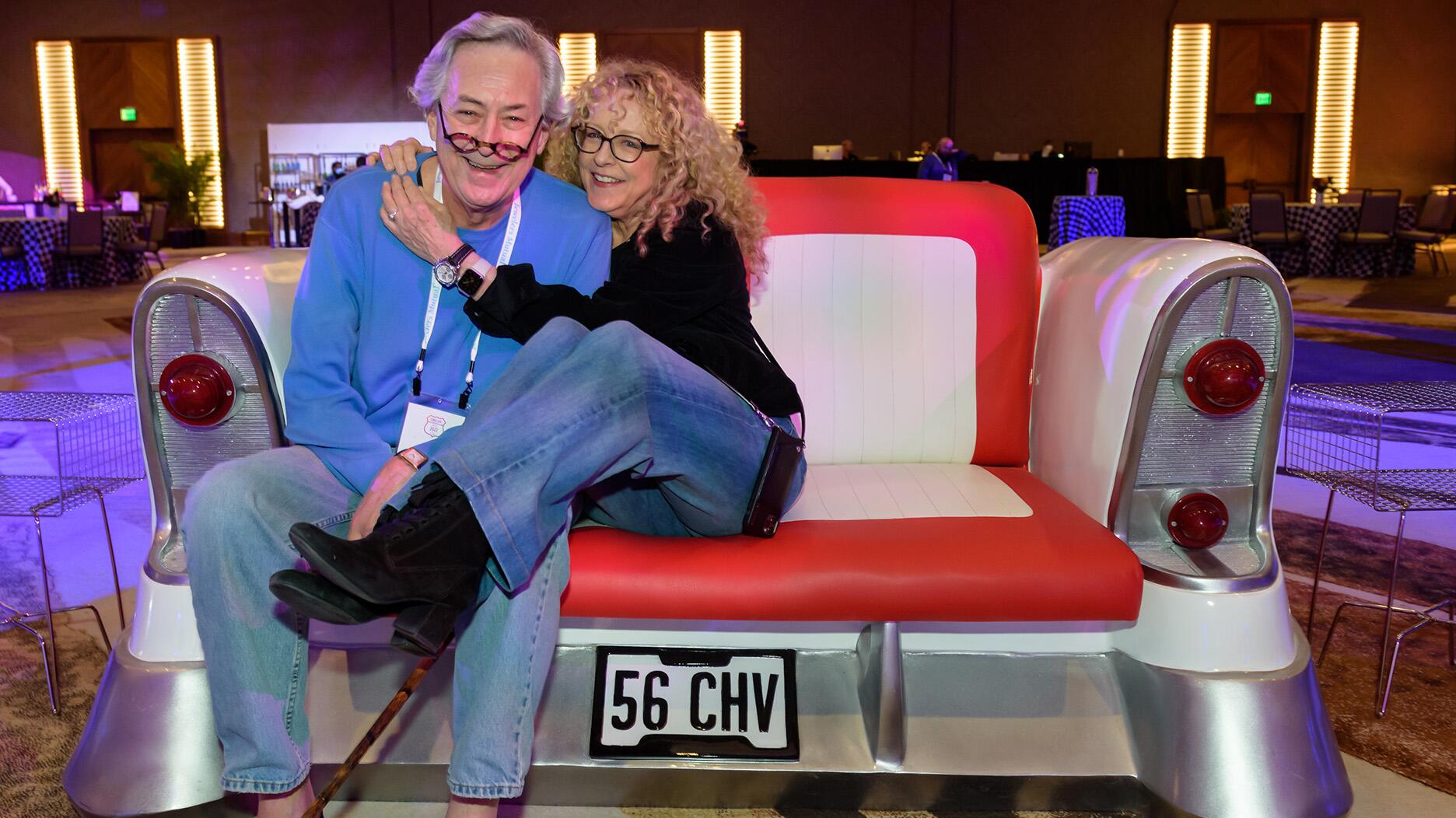The luxury goods company said founder Ippolita Rostagno will remain at the brand’s helm.
Precious and imperial topaz from Brazil
Brazil produces more topaz than any other country in the world. Most of the production is colorless, which is irradiated and heated into various shades of blue. Precious and imperial topaz offer a rare and warmer alternative to the cool blue shades we are accustomed to seeing in jewelry stores. “Precious” topaz usually refers to yellow to orange colors while “imperial” topaz usually refers to pinkish-orange to pink to purple and even red colors (see figs. 1 and 6). However, some dealers argue that all topaz in these warmer hues should be classified as imperial. Since the origin of the word topaz is most likely from the Sanskrit word “tapas,” meaning fire, this argument seems to have merit. Recent price increases are due to limited mining, renewed interest from designers in these warmer hues and strong domestic demand in Brazil.

Fig.1: Precious and imperial topaz from Ouro Prêto, Brazil (Gems from 5 carats to more than 62 carats)
Center: Classic orthorhombic crystal with prismatic termination (102g). Photo: E. Boehm, RareSource
No visit to Brazil would be complete without stopping by the famous gold mining region of Ouro Prêto, “Black Gold” in reference to the black rock in which gold was first discovered there during the Brazilian gold rush of the early 18th century. Today, this beautifully preserved colonial Portuguese city is a UNESCO World Heritage Site and the world’s only source for imperial topaz.
Ouro Prêto, while built on gold mining, is today more famous for precious and imperial topaz, which was also discovered here in the early 1700s. The topaz mines are located just a short drive outside the city so it is possible to visit them in a few days. Getting there is easier if one flies through the closest major airport in Belo Horizonte, which is only a two- to three-hour drive from Ouro Prêto.
The two main large-scale mines of Capão and Vermelhão produce the majority of all material on the market today but there are also several small-scale mines operated by independent artisanal miners known as Garimpeiros. Vermelhão is the Portuguese word for vermilion in reference to the reddish-orange to red topaz crystals found there. All the mines are open-pit operations that use water to separate the gem crystals from the weathered host rock.


Fig.2: Washing grate (top left) used for the initial separation of host rock and gem-bearing ore, which flows down the slope to the rolling jig that further separates the gems from the ore. Capão Imperial Topaz Mine, Brazil.
Photo: E. Boehm, RareSource
Fig.3: Fine topaz crystals (top right) displaying the orange to sherry range of color found at the Capão mine in Ouro Prêto, Brazil. Photo: E. Boehm, RareSource

Geology
Topaz is an alumina-silicate that typically forms in granitic pegmatites or rhyolitic igneous rocks. Imagine a molten volcanic material that travels from the lithosphere deep in the earth through the asthenosphere and ultimately into the Earth’s crust. This molten material either migrates up as a large plutonic mass, or squeezes into weaker fractured areas within the earth’s crust creating pegmatites, or explodes out in the form of a volcanic rhyolite. Once it

Fig.5: Topaz crystals in host rock from the Vermelhão Mine in the Saramenha district of Ouro Prêto within the state of Minas Gerais, Brazil. Photo: E. Boehm, RareSource
Gemology
The basic chemical formula for topaz is Al2(SiO4)(F,OH)2. Precious and imperial topaz gets its colors from trace amounts of chromium (Cr+3). It has a relatively high hardness of eight on the Mohs scale, which is the same as spinel. Like diamond, it has one direction of perfect cleavage so care must be taken to avoid hard blows. Its relatively high refractive index (1.61-1.63) and excellent transparency make topaz one of the most versatile and desirable gems. Like tanzanite and chrysoberyl, topaz is no-axial which means it has two optic axes and three optical directions through which light travels at different speeds. These three optical directions represent the three refraction indices of topaz. This also means that each direction has a different absorption producing different colors. Blending these colors in the faceting process is a true art and can produce amazingly varied results, particularly in precious and imperial topaz. Topaz typically contains two-phase inclusions (liquid and gas), three-phase inclusions (crystal, liquid and gas), or multi-phase inclusions (crystals, liquids and gas). These multi-phase inclusions are a result of the hydrothermal phase during which crystal growth occurs.

Graduate Gemologist (G.G.) Edward Boehm is the owner of RareSource (formerly JOEB Enterprises), a Chattanooga, Tenn.-based gemstone supply and consultancy. RareSource travels to mines worldwide to bring customers the finest quality gemstones. Contact him at edward@raresource.com. For those attending the Tucson show next month, please feel free to drop by the RareSource booth #406 at the AGTA show.
The Latest

Laura Burdese, who joined the Italian luxury brand in 2022, will take on the role in July.

Need a gift for the cat lover who has everything? Look no further than our latest Piece of the Week.

How Jewelers of America’s 20 Under 40 are leading to ensure a brighter future for the jewelry industry.

It purchased the “Grosse Pièce,” an ultra-complicated Audemars Piguet pocket watch from the ‘20s, for a record-breaking price at Sotheby’s.


The lab-grown diamond grower now offers custom engagement and fashion jewelry through its Kira Custom Lab Jewelry service.

The boutique is slated to open this week inside Terminal 8, offering pre-owned Rolex watches and more to international travelers.

Roseco’s 704-page catalog showcases new lab-grown diamonds, findings, tools & more—available in print or interactive digital editions.

Sponsored by Digital Monitoring Products

The special-edition egg pendant ingested in a New Zealand jewelry store was recovered after a six-day wait.

Associate Editor Natalie Francisco plays favorites with Piece of the Week, selecting a standout piece of jewelry from each month of 2025.

The “Love and Desire” campaign is inspired by the magic that follows when one’s heart leads the way, said the brand.

Two awardees will receive free tuition for an educational course at the Swiss lab, with flights and lodging included.

Berta de Pablos-Barbier will replace Alexander Lacik at the start of January, two months earlier than expected.

Sotheby’s held its first two jewelry sales at the Breuer building last week, and they totaled nearly $44 million.

Winners will receive free registration and lodging for its fourth annual event in Detroit.

Here are six ideas for making more engaging content for Instagram Reels and TikTok, courtesy of Duvall O’Steen and Jen Cullen Williams.

The honorees include a notable jewelry brand, an industry veteran, and an independent retailer.

Carlos Jose Hernandez and Joshua Zuazo were sentenced to life without the possibility of parole in the 2024 murder of Hussein “Sam” Murray.

Yood will serve alongside Eduard Stefanescu, the sustainability manager for C.Hafner, a precious metals refiner in Germany.

The New Orleans jeweler is also hosting pop-up jewelry boutiques in New York City and Dallas.

Set in a Tiffany & Co. necklace, it sold for $4.2 million, the highest price and price per carat paid for a Paraíba tourmaline at auction.

The jeweler’s “Deep Freeze” display showcases its iconic jewelry designs frozen in a vintage icebox.

Take luxury gifting to new heights this holiday season with the jeweler’s showstopping 12-carat sphene ring.

This year's theme is “Unveiling the Depths of the Ocean.”

In its annual report, Pinterest noted an increase in searches for brooches, heirloom jewelry, and ‘80s luxury.

Starting Jan. 1, customers can request the service for opal, peridot, and demantoid garnet.


























